Osram/Philips once again faces the “squeeze†of domestic packaging factories, and the LED headlight market is welcoming the year of explosion.
The LED headlight market is about to usher in new opportunities.
The importance of car headlights is self-evident. At present, the development of car headlights is mainly oriented towards high response, high brightness, low energy consumption and intelligence. With the use of new materials and new technologies, additional features such as small size and long life are also emerging.
LED is undoubtedly one of the most advantageous alternative sources, although some manufacturers are already developing laser lighting. But for at least three years, LED light sources will gradually become one of the mainstream light sources for automotive lighting.
According to statistics from the High-Tech Research Institute LED Research Institute (GGII), the global automotive lighting market increased by 5.8% in 2015 compared with 2014, with a total volume of nearly US$23 billion. By 2020, with the outbreak of new energy vehicles, it will boost automotive lighting. The market size has grown to $30 billion.
GGII expects that the global automotive LED lighting market is expected to exceed $10 billion by 2020, and the penetration rate will increase to around 30% by the headlight market.
In 2008, the full LED headlights were first commercialized and gradually applied to the C-class sedan market in 2012. But for a long time, due to price factors and the slow driving speed of the lamp manufacturers, the market size has been stagnant.
However, such a situation will be fundamentally changed in the second half of this year.
The price "sweet spot" comes
JEEP, the global leader in SUVs, announced that it plans to replace traditional headlights with LED lighting in the new JEEP Wrangler.
In addition, including Audi, BMW, Lexus and other high-end models, it is also planned to fully standardize LED headlights in the new models released in the second half of this year.
The addition of a number of mid-end brand models will make 2017 the real outbreak of LED headlights. According to relevant sources, the price of LED headlights used in JEEP models is about 595 US dollars, and also includes LED fog light combination.
From the perspective of the current car manufacturer, the price of 600 US dollars is close to the "sweet spot" replaced by headlights. More importantly, LED lighting can provide a brighter, more uniform beam in a dark environment than conventional sources.
The price is high, because the car manufacturer did not use the LED light source in the headlights. According to automakers, HID headlights are currently priced at $800-$1,000/pair, while LED headlights are about eight times more expensive than HIDs in the past few years.
At present, more car consumers can only be forced to choose LED lighting to replace traditional halogen lamps.
More car manufacturers are expected to start next year, LED headlights will become one of the highlights of the new model. This is because the lamp manufacturer will gradually increase the penetration rate of LEDs on traditional lamp products.
LED+ intelligent control
Another factor is the rapid growth of the new energy vehicle market.
The China Association of Automobile Manufacturers released the latest data. In the first half of this year, China's new energy vehicles produced 177,000 vehicles and sold 170,000 vehicles, up 125% and 126.9 percent year-on-year respectively.
According to the stated goal of the Chinese government, by 2020, the number of new energy vehicles operating on the road will reach 5 million.
Energy efficiency is important for automakers preparing to develop pure electric vehicles. For consumers, an important purchase standard is the distance that an electric car can travel when it is fully charged.
To this end, automakers are looking for ways to improve the energy consumption of various functions and thus improve the car's endurance. LED lights clearly have great energy-saving advantages, making them a natural choice for lighting design engineers.
Comprehensive improvement of driving safety is also one of the reasons for the rapid start of the LED headlights market.
According to statistics, 22% of traffic accidents occur in the case of poor visibility, and most of the accidents are caused by the limited illumination width and distance of the vehicle, the dim light of the illumination light, and the driver's inability to respond in time. Headlight lighting is critical to the safety of the lights.
The US IIHS recently conducted a surprise test on the 2016 mid-size headlights, of which 85.17% of the halogen headlights did not meet the safety regulations. In 2016, the new car equipment rate for halogen lamps is still as high as 57.3%, and the number of old halogen lamps installed for many years will exceed 100 million.
The life of a traditional halogen lamp is usually only 500 hours, and the light attenuation is very serious. The lamp is used at a slightly higher frequency. After a long time, the brightness will be lowered, and the driver's visual range will be seriously reduced, thereby affecting driving safety.
The current mainstream LED headlamps have a lifetime of more than 25,000 hours. At the same time, the huge traditional halogen lamp stock market will also bring huge new demand for modification in the future.
According to industry insiders, the outbreak of the LED headlamp market is only a technical opportunity to solve the long-standing troublesome heat dissipation problem.
The LED itself heats up and the ambient temperature rises, which will definitely reduce the energy efficiency conversion of the LED headlights. Solving heat dissipation is the key to judging the maturity and quality of the products.
Today's automotive LED headlights are composed of dozens of independent LED light bodies, so each LED light body can be independently controlled, and the lighting method can be described as ever-changing.

In addition, the automatic headlights can be said to be the entry-level technology of smart headlights. When entering a tunnel or a place with insufficient light, the headlights can be automatically turned on.
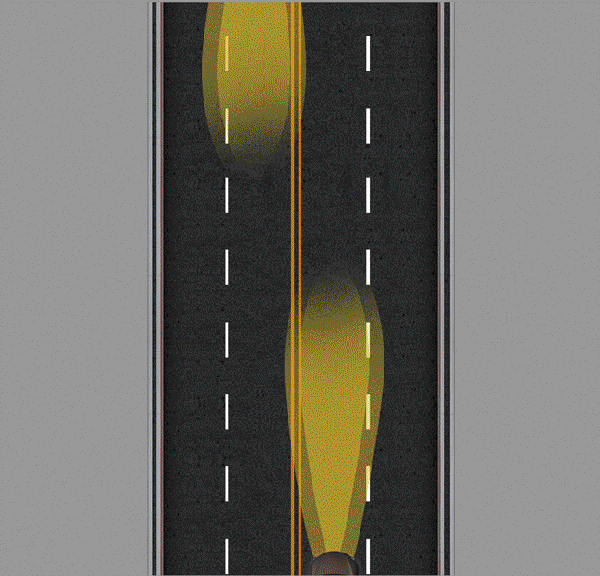
When driving on a dark road, if it is detected that there is a car or pedestrian in front of it, the high beam will automatically switch the vehicle low beam to avoid direct traffic.
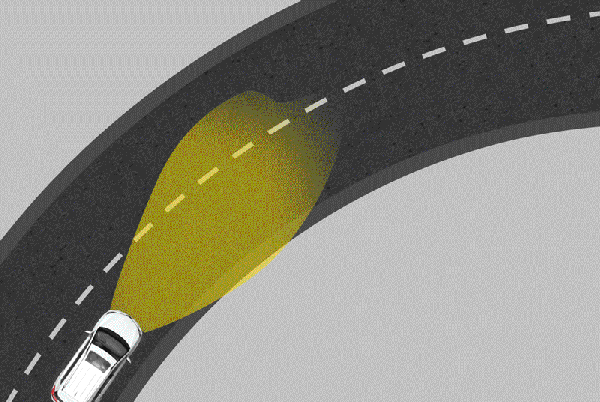
At the same time, more intelligent controls are also integrated into the part of the turn signal with higher relative permeability. When the turn signal is turned on, the LEDs will light up in sequence to provide a dynamic lighting effect.
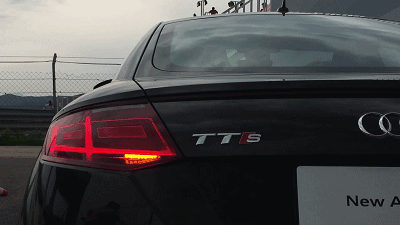
When the automatic headlights are turned on, the lights can be automatically adjusted according to the speed of the vehicle. The higher the speed, the farther the illumination distance is.
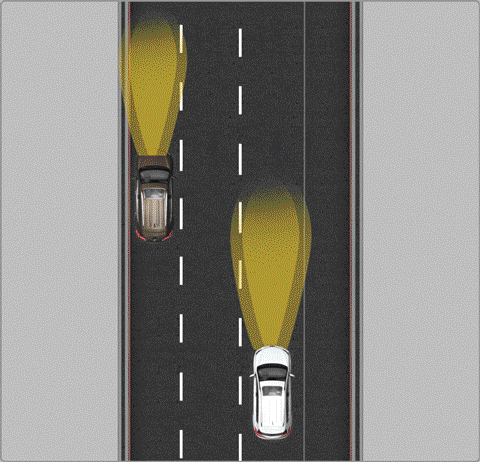
In the case where the high beam is turned on, if it is detected that there is a co-directional vehicle in front, several LED lamps are automatically turned off, and the high beam is turned on without directly illuminating the preceding vehicle.
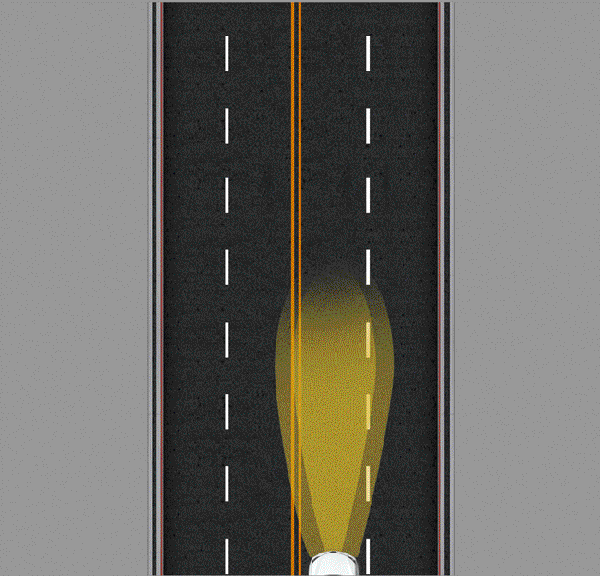
If there is a pair of cars, the LED body will be dynamically adjusted according to the position of the car to achieve the effect of the partition lighting.
Domestic manufacturers have sprung up
All along, in the field of automotive lighting, foreign majors have always dominated. Whether it is a light source or a finished lamp.
But such a "passive" position in the market is changing.
The semi-annual report of Xingyu (601977), one of the largest manufacturers of headlights in China, showed that the operating income in the first half of the year was 1.55 billion yuan, a year-on-year increase of 35.47%, of which the revenue from headlights reached 1.38 billion yuan, accounting for 89.03%; The net profit of shareholders of listed companies was 172 million yuan, a year-on-year increase of 27.07%.
In the first half of the year, Xingyu acquired a number of development tasks including Audi's two models of headlights and Volkswagen's two models of LED headlamps, and signed a strategic cooperation agreement with Panasonic China to strengthen the company's LED lights and automotive electronics. The strength of the field.
According to the data provided by Xingyu shares, the current penetration of LED front lights is still below 10%, mainly equipped with mid-to-high-end models, but the current trend is to fully enter the 100-200,000-class car. It is expected that the LED front lights will be 2020. The market penetration rate will exceed 25%, bringing the industry compound growth by more than 20%.
As one of the largest automotive LED light source providers in China, Hongli Zhihui (300219) has actively deployed the automotive lighting market in recent years. It has successfully solved the blurring of the cut-off line of LED lights, and the reliability of LED lights is poor. Technical problems with low brightness have so far submitted 20 patent applications.
According to the data of the semi-annual report, Hongli Zhihui's revenue from automotive LED lighting in the first half of the year was RMB 93 million, an increase of 75.47% over the same period of the previous year, and the gross profit margin of the products was as high as 50%.
For the current conventional lighting LED packaging products gross margin is generally 20-30% level, the huge profit margin of the automotive lighting market is worth looking forward to.
Fo Da Signal, a subsidiary of Hongli Zhihui, was involved in the production of finished lamps, and its performance was outstanding. The net profit in the first half of the year was 2,692,500 yuan.
At present, domestic listed companies including Feile Audio and Snowlight are involved in the production of LED lamp products.
LED daytime running lights market price war
The launch of the LED headlight market will drive the rapid decline in the price of LED automotive lighting such as traditional automotive interiors and daytime running lights.
As a light source application for LED automotive lighting, it is used to provide vehicle identification. The relevant data shows that daytime running lights can reduce vehicle accidents by 12.4%, and can also reduce 26.4% of crashes.
Many countries have started to force the installation of daytime running lights since 2011. At present, the cost of such LED lamps is generally between 200 yuan and 1,200 yuan, and the price difference depends on the model, the width of the body and the material of the running lights.
As domestic low-end models gradually standardize daytime running lights, the growth in market demand will drive more LED packaging companies to enter the automotive lighting market.
The new semi-board listed company Ruibo Optoelectronics (833810), which is mainly engaged in automotive lighting, reported that its operating income in the first half of the year was 70,738,200 yuan, an increase of 60.38% over the previous period; the net profit attributable to the listed company's shareholders was 7.123 million yuan. Growth of 33.2%.
Ruibo Optoelectronics said that with the increasingly fierce market competition in the domestic vehicle manufacturing industry, the whole vehicle manufacturing industry is facing cost pressures. In addition, the company is in the stage of product structure optimization, and the increase in employee salaries has led to a decline in the gross profit margin of the company's vehicle lighting business. . In the first half of the year, the company's LED car light gross margin was 27.15%.
At present, domestic packaging manufacturers including Jingke Electronics, Jingrui Optoelectronics, Yimeixinguang, Ruifeng Optoelectronics have all entered the automotive lighting market. In addition, China's Taiwan packaging companies are also involved in the automotive lighting market.
Some insiders expect that in the middle and low-end automotive lighting, especially the post-modification market, the LED supply will face a rapid growth trend in the next three years. It is not ruled out that some enterprises will seize market share by price war to squeeze into the automotive lighting market.
The high threshold of the pre-installation market will be the biggest risk for most LED packaging companies to enter the high-end market. At the same time, different models of brand models have a great impact on the gross profit margin of products.
But no matter what, this is the impact of the automotive LED market that has been dominated by multinationals such as Osram, Philips and Dominant. It is difficult to say that in the past three or five years, the LED lamp market will not once again stage the "China pattern" of today's general LED lighting market.
Some of the new models with LED headlights listed in the second half of the year:
FAW-Volkswagen Audi's new A4L is equipped with LED headlights, and matrix LED headlights are optional.

Dongfeng Nissan announced the 2.5L XV CVT 4WD sports version of Qijun, adding LED headlights and automatic headlights.
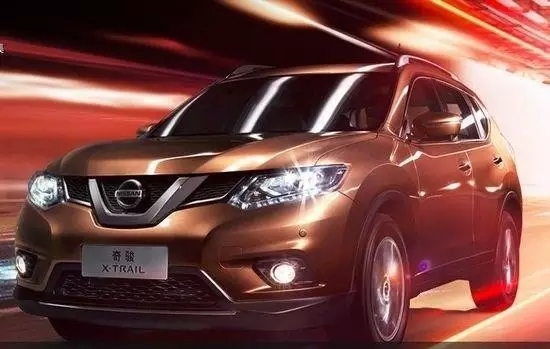
Beijing Hyundai's new brand new Shengda released, the new car's headlights upgraded to LED light source, equipped with LED daytime running lights.
Beijing Benz's new generation E-class long-axis version, all standard standard LED headlights.
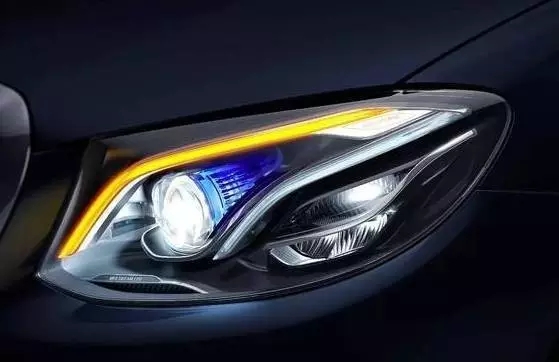
Guangqi Honda's second SUV crown road, the headlights have far-near light intelligent switching function, equipped with eagle-wing LED headlights.
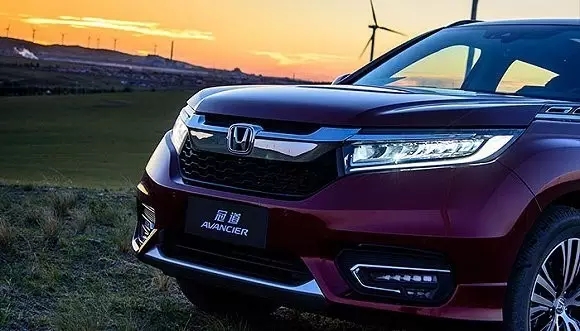
SAIC GM Buick made the new Angola, equipped with LED headlights and taillights.
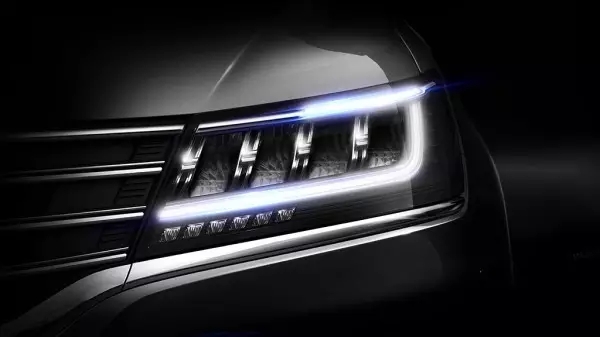
SAIC Roewe's new SUV will be equipped with matrix LED headlights.

0.8mm Pin Header
Antenk 0.8mm Pitch Male Header series is a fine pitch, low profile, single/dual/three/four row, PCB mounted connector set intended for limited space applications or where total weight is a factor. Our specially tooled insulators and contacts maintain consistent high quality through our automated production processes. Each series is available in thru-hole PCB or SMT mounting and plated tin, gold or selective gold as specified.
0.8mm Pin Header Options
Number of Rows
1/Single
2/Double
3/Three
4/Quad
Number of Positions
2 Position
3 Position
4 Position
5 Position
6 Position
8 Position
10 Position
12 Position
14 Position
15 Position
16 Position
17 Position
20 Position
Termination Style
SMD/SMT
Through Hole
Mounting Angle
Right Angle
Straight
0.8mm Pin Header Specifications:
Material: Standard Hi-Temp insulator: Nylon 6T, rated UL94V-0
Insulator Color: Black
Contacts: Phosphor Bronze
Plating:
U = Gold over nickel underplate
SG = Gold over nickel underplate on
contact area, tin over copper underplate on tails.
T = Tin over copper underplate overall.
Electrical:
Operating voltage: 250V AC max.
Current rating: 1 Amp max
Contact resistance: 20 mΩ max. initial
Insulation resistance: 5000 MΩ min.
Dielectric withstanding voltage: 1000V AC for 1 minute
Mechanical:
Mating durability: 500 cycles min.
Temperature Ratings: Operating temperature: -40°C to +105°C
Max process temp: 230°C for 30 ~ 60 seconds (260°C for 10 seconds)
Soldering process temperature: 260°C
Packaging:
Anti-ESD plastic bags or tubes
Approvals and Certifications:
UL Recognized File no. E224053
Pin Header,0.8Mm Male Header,0.8Mm Pin Header,0.8Mm Male Header Pins,0.8mm Pitch Pin Header,SMT 0.8mm Pin Header, THT 0.8mm Pin Header
ShenZhen Antenk Electronics Co,Ltd , https://www.antenk.com